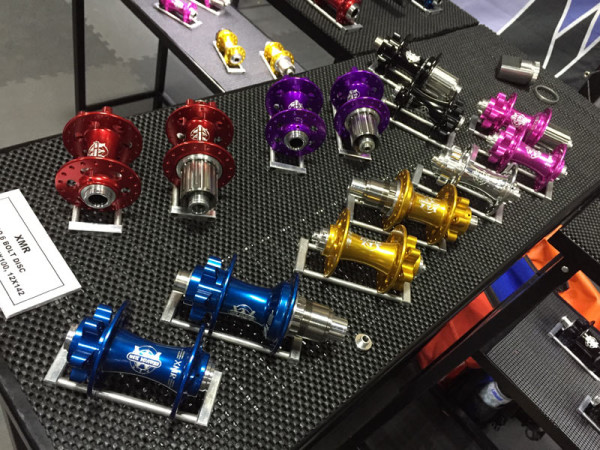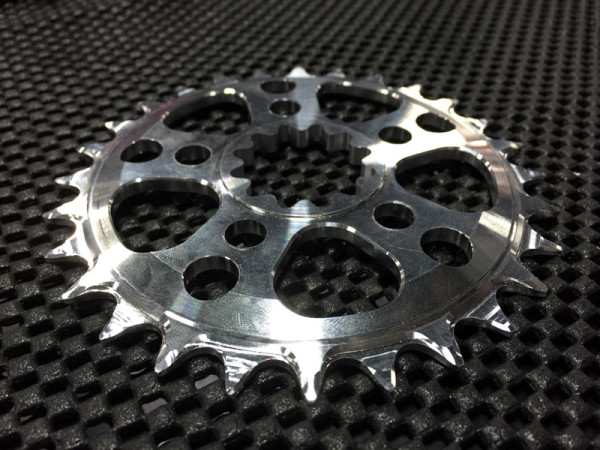The new White Industries Boost hubs will come in Centerlock and 6-bolt options. They’re the same as the others, just wider, and only coming in silver and black. These just came off the line right before the show, so they didn’t have official weights. But, we brought our gram scale…
Boost hub weights are 6-bolt rear (310g, standard freehub) and front (179g), and Centerlock rear (307g, XD freehub) and front (171g). All were weighed on our scale with thru axles.
They should be available by the end of November and pricing should be similar to their other hubs, maybe a bit more since there are some material changes.
New 6-bolt XMR hubs save about 40g off their old version. Official weights are now final, front is 175g with 15 TA, rear is 298g with 12mm thru axle. Available now, seven color options. They’ve done away with green because the anodized color was too inconsistent.
Will have the option of using their high engagement ratchet ring at no upcharge. Standard has 24 teeth, the higher one has 48 teeth to get a 7.5° rotation. It’s also retrofittable to their hubs from the past 20 years, retail is $40 for the ring and new pawls. You’ll need this special tool to remove the old ring, and they’re still sorting out whether you’ll need to send your wheels in or find a shop that has one. Or you can buy the tool for $50 and do it yourself.
Their narrow/wide chainring is still plugging along through development, but now they’re trying to make it so a single ring works with both of their different crank spindle lengths to create the right chainline by simply flipping it over. That way you won’t need to worry about which ring goes with which crankset.
Their chainrings aren’t new, but we hadn’t ever really seen how they work, and it’s brilliant. Pick the big ring you want, which mounts to their crank arm directly, then pick the small chainring size you want and bolt it directly to the big ring. The slots on the spider are the mounting holes, and it centers itself up automatically. There’s a shift ramp spacer between them, and they recommend a minimum of 10-tooth count differences to keep the ramps from messing with the chain’s ability to properly seat on the big ring. They say Shimano chains work best with it.






